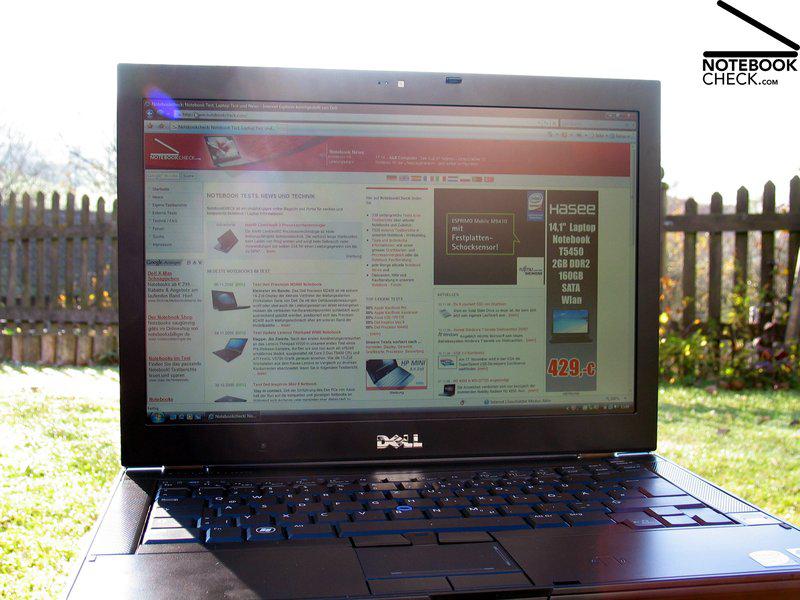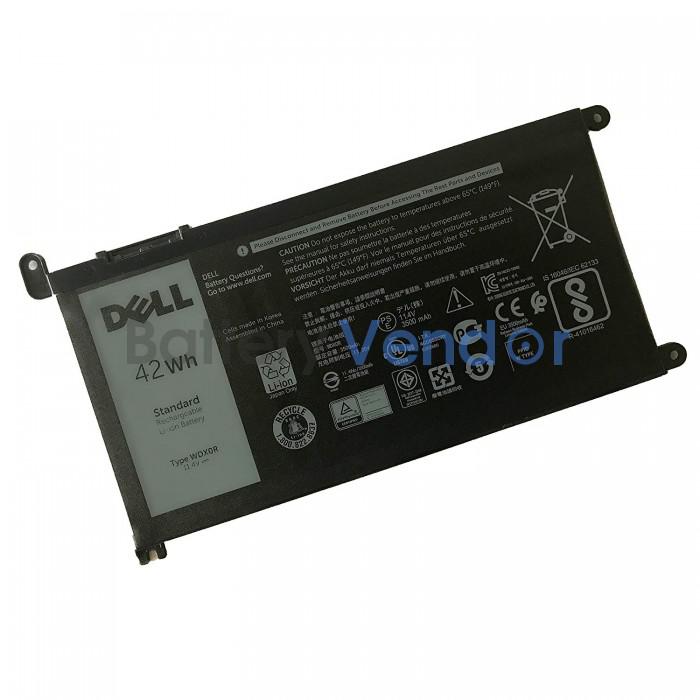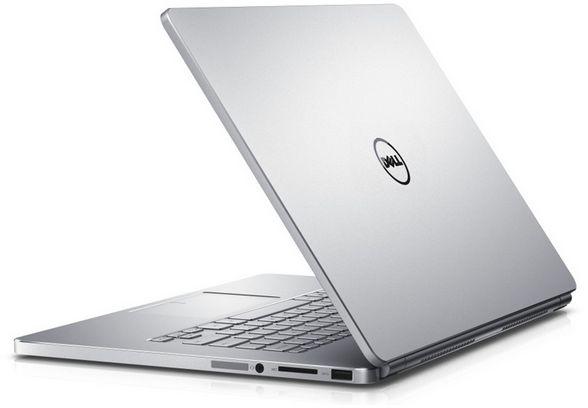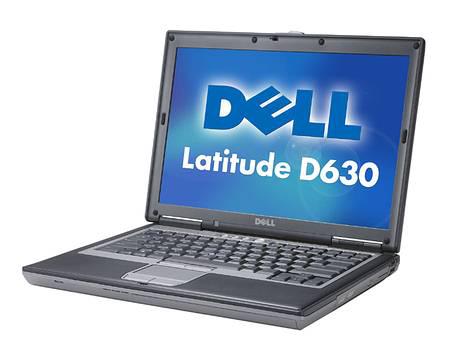by Jerry Jackson
the
Dell Latitude E6400
is a 14-inch laptop for businesses that need good performance, solid design, and common parts for an entire workforce. This notebook competes with notebooks like the HP EliteBook 6930p and Fujitsu LifeBook S7220. The E6400 offers a wide range of hardware configurations as well as solid State Drives (SSDs) for businesses that require extreme durability and extreme performance. Should your business hurry and buy the latest generation of Dell business notebooks? We took a closer look to find out.
Our review unit of the
Dell Latitude E6400
came up with the following options:
Windows Vista Business (32-bit)
Intel Core 2 Duo processor P9500 (2.53 GHz)
2GB 800MHz DDR2 SDRAM (maximum capacity 8GB)
160 GB Hitachi Hard Drive (7200 rpm)
Matt TFT-LCD display with 14.1 inch diagonal at 1440 x 900 (WXGA+, matt)
256MB nVidia Quadro NVS 160M (256MB dedicated plus shared memory)
8x DVD (+/-R Double Layer) drive
Intel Wireless WiFi Link 4965AGN (802.11a/g/n)
Bluetooth 2.1
Dimensions: 1.1-1.3"(H) x 13.1(W) x 9.37"(D)
Weight: 5.56 pounds
90W 100-240V power supply
9-cell (85Wh) lithium-ion battery
Price as tested:
$2,148
(Starting price: $1,139 … $879 after immediate savings)
Build and design
Unlike the previous generation of Dell Latitude notebooks with rounded edges and curves, the Dell Latitude E-Series offers a "down to business" industrial design. The chassis is made entirely of magnesium alloy with many 90-degree edges and sharp angles. The visuals are while somewhat modern, it's also a bit "old school" and could be mistaken for a 5 year old laptop from a distance. Still, the build quality and design speak volumes in terms of the overall durability of this notebook.
During testing, there were no creaks or squeaks from the plastic, thanks to the magnesium alloy structure. The entire bottom shell is made from a metal alloy, giving the laptop a strong footing on your desk and providing enough strength to resist flexing when you hold the laptop the edge of the palm rest and walk around the room. The only downside to the chassis is that the alloy is thinner than expected in some places (more on that later). Another small issue we noticed is that the bottom cover of the E6400 really needs an extra screw in the lower right corner next to the hard drive bay. The magnesium base plate slaps at this corner of the notebook and makes an annoying metal tap when typing on uneven surfaces.
The heavy use of magnesium alloy carries over to the notebook's lid, which features an attractive "brushed metal" design, which is not actually brushed metal but a painted finish. This imitation brushed metal finish is available in black, blue, or red to give businesses (and their employees) the ability to customize the look of their business notebook. The finish itself appears to be quite durable and should withstand years of use and abuse.
In addition to the overall design of the notebook itself, the new docking station for the Latitude E-series notebooks is worth mentioning. Most companies will likely use the E6400 with a docking station and an external monitor, so employees can have a mobile laptop when traveling and a "desktop" in the office. computers can have. Dell made some changes to the Latitude docking station this year. As well as relocating some ports, they've also added an extra USB port on the side and offer new DisplayPort connectors for the latest external displays.
Screen
The Dell Latitude E6400's WXGA+ (1440×900) matte screen is absolutely beautiful. No dead pixels were found during testing, and backlight bleed through was minimal on some dark screens. Colors were vibrant despite the matte screen and that's an added benefit One of the downsides of matte screens is the lack of reflection in an office environment. Wide viewing angles kept the screen looking sharp even at oddly distorted angles. The backlight setting was very wide, allowing me to set it low enough for darker room settings and bright enough to work at sunlight or a bright office.
A small negative about the screen is that the notebook lid does not offer the best protection for the screen. Although the lid is quite durable and should protect the lid from most impacts, the thin lid flexes and creates "ripples" on the screen, when pressure is applied to the back of the screen The release latch was smooth and, unlike most latches in budget notebooks, required little effort to release.
keyboard and touchpad
The keyboard and palm rest structure is solid, but the thin alloy palm rests flex a little under pressure. The keyboard suffers from virtually zero flex under very firm pressure, and it's a nice improvement over the older Dell Latitude D630.
The keyboard is very comfortable to type on and provides just the right response to each keystroke. Key action is similar to most business notebooks with just a little less click noise than what we hear on ThinkPads in our office. The keyboard layout wasn't at all cramped and the keyboard backlight enabled typing in a dark room.
The Alps touchpad has a nice smooth texture and is reasonably responsive, but could be improved. Lag and accuracy were inferior to many competing business notebooks. The size of the touchpad area was large enough for comfortable control and the two touchpad buttons stretched the full length of the touchpad, each making a faint click when pressed. The touchpoint/trackpoint in the center of the keyboard is a nice improvement over the touchpoint on the older D630, but again we found the touchpoints of Lenovo's business notebooks and HP more responsive and accurate.On the other hand, the touchpoint includes three mouse buttons for better control when browsing the tabbed web.
Next to the touchpad on the right palm rest, you'll also see a SmartCard contact reader...so employees can use their SmartCard security badges with their notebook without having to physically insert the SmartCard into the notebook.
Performance and benchmarks
The configured Dell Latitude E6400 offers more than enough speed and storage to meet most user needs. The high-end Intel Core 2 Duo P9500 and nVidia Quadro
NVS 160M
combined with a reasonably fast hard drive make this laptop an excellent performer for both light multimedia applications and number crunching. Below are benchmarks to give you an idea of how this laptop might compare to other notebooks on the market .
WPrime 32M comparison results
wPrime
is a program that forces the processor to perform recursive mathematical calculations. The advantage of this program is that it is multi-threaded and can use both processor cores at the same time, which allows for more accurate benchmarking measurements than Super Pi.
Laptop / CPU
wPrime 32M
time
Dell Latitude E6400 (Intel Core 2 Duo P9500 @ 2.53GHz)
30.497s
HP EliteBook 8530w (Intel Core 2 Duo T9400 @ 2.53GHz)
30,919s
Lenovo T400 (Intel Core 2 Duo T9600 @ 2.8GHz)
27,410s
Lenovo T500 (Intel Core 2 Duo T9600 @ 2.8GHz)
27.471s
Lenovo T61 (Intel Core 2 Duo T7300 @ 2.0GHz)
42.025s
Dell
Vostro 1500
(Intel Core 2 Duo T5470 @ 1.6GHz)
53,827s
HP Pavilion dv6500z (AMD Turion 64 X2 TL-60 @ 2.0GHz)
40,759s
Systemax Assault Ruggedized (Core 2 Duo T7200 @ 2.0 GHz)
41,982s
Toshiba Tecra M9 (Core 2 Duo T7500 @ 2.2GHz)
37.299s
HP Compaq 6910p (Core 2 Duo T7300 @ 2GHz)
40.965s
Sony VAIO TZ (Core 2 Duo U7600 @ 1.20GHz)
76,240s
Zepto 6024W (Core 2 Duo T7300 @ 2GHz)
42.385s
Lenovo T61 (Core 2 Duo T7500 @ 2.2GHz)
37,705s
Hewlett Packard DV6000z (Turion X2 TL-60 @ 2.0GHz)
38,720s
PCMark05 Comparison Results:
Notebook
PCMark05
score
Dell Latitude E6400 (2.53GHz Intel P9500, Nvidia
Quadro NVS 160M
256MB)
5,780 PCMarks
HP EliteBook 8530w (2.53GHz Intel T9400, Nvidia Quadro FX 770M 512MB)
6,287 PCMarks
Lenovo T400 (2.80GHz Intel T9600, ATI Radeon 3470 256MB GDDR3)
6,589 PCMarks
Lenovo T400 (2.80GHz Intel T9600, Intel X4500)
N / A
Lenovo T500 (2.80GHz Intel T9600, ATI Radeon 3650 256MB GDDR3)
7,050 PCMarks
Lenovo T500 (2.80GHz Intel T9600, Intel X4500)
5,689 PCMarks
Lenovo T61 Standard Screen (2.0GHz Intel T7300, NVIDIA NVS 140M 256MB)
4,839 PCMarks
Dell
Vostro 1500
(1.6GHz Intel Core 2 Duo T5470, NVIDIA GeForce Go 8400M GS)
3,585 PCMarks
Dell Inspiron 1420 (2.2GHz Intel Core 2 Duo T7500, NVIDIA GeForce Go 8400M GS)
4,925 PCMarks

Sony
VAIO FZ
(2.0GHz Intel Core 2 Duo T7300, Intel X3100)
3,377 PCMarks
Dell
XPS M1330
(2.0GHz Intel Core 2 Duo T7300, NVIDIA GeForce Go 8400M GS)
4,591 PCMarks
Lenovo
ThinkPad X61
(2.0GHz Intel Core 2 Duo T7300, Intel X3100)
4,153 PCMarks
Lenovo 3000 V200 (2.0GHz Intel Core 2 Duo T7300, Intel X3100)
3,987 PCMark
Lenovo T60 Widescreen (2.0GHz Intel T7200, ATI X1400 128MB)
4,189 PCMarks
HP dv6000t (2.16GHz Intel T7400, NVIDA GeForce Go 7400)
4,234 PCMarks
3DMark06 comparison results:
Notebook
3DMark06
score
Dell Latitude E6400 (2.53GHz Intel P9500, Nvidia
Quadro NVS 160M
256MB)
1,818 3D marks
HP EliteBook 8530w (2.53GHz Intel T9400, Nvidia Quadro FX 770M 512MB)
5,230 3DMarks
Lenovo T400 (2.80GHz Intel T9600, ATI Radeon 3470 256MB GDDR3)
2,575 3DMarks
Lenovo T400 (2.80GHz Intel T9600, Intel X4500)
809 3D marks
Lenovo T500 (2.80GHz Intel T9600, ATI Radeon 3650 256MB GDDR3)
4,371 3D marks
Lenovo T500 (2.80GHz Intel T9600, Intel X4500)
809 3D marks
Lenovo T61 Standard Screen (2.0GHz Intel T7300, NVIDIA NVS 140M 256MB)
1,441 3D marks
Dell
Vostro 1500
(1.6GHz Intel Core 2 Duo T5470, NVIDIA GeForce Go 8400M GS)
1,269 3D marks
Dell Inspiron 1420 (2.2GHz Intel Core 2 Duo T7500, NVIDIA GeForce Go 8400M GS 128MB)
1,329 3D marks
Sony
VAIO FZ
(2.0GHz Intel Core 2 Duo T7300, Intel X3100)
532 3D marks
Dell
XPS M1330
(2.0GHz Intel Core 2 Duo T7300, NVIDIA GeForce Go 8400M GS 128MB)
1,408 3D marks
Samsung Q70 (2.0GHz Core 2 Duo T7300 and nVidia 8400M G GPU)
1,069 3D marks
Asus F3sv-A1 (Core 2 Duo T7300 2.0GHz, Nvidia 8600M GS 256MB)
2,344 3D marks
Fujitsu Siemens Amilo Xi 1526 (1.66 Core Duo, nVidia 7600Go 256MB)
2,144 3D marks
Samsung X60plus (2.0GHz Core 2 Duo T7200, ATI X1700 256MB)
1,831 3DMarks
Asus A6J (1.83GHz Core Duo, ATI X1600 128MB)
1,819 3D marks
HP dv6000t (2.16GHz Intel T7400, NVIDA GeForce Go 7400)
827 3D marks
HDTune storage drive performance test:
For those interested in replacing the E6400's standard hard drive with a high-performance Solid State Drive (SSD), the E6400 is available with the following SSD options and prices:
Dell Mobility 64GB Solid State Drive (add $499)
64GB Ultra Performance Solid State Drive ($649)
Dell Mobility 128GB Solid State Drive (add $649)
speaker
The E6400's speakers were above average for most laptops, comparable to the speakers found on most small mid-range TVs. While lower levels of bass were lacking, volume levels were quite loud and distortion at peak levels was absent directs the sound up and towards the user.
Speaking of great locations, it's also worth noting that the fingerprint reader is now below the right speaker. This is a much better position than the palm rest or between the touchpad buttons (where most manufacturers place the fingerprint reader) since you're less likely to put the fingerprint reader Trigger fingerprint reader when you pick up the notebook or use the touchpad buttons.
Input and output ports
Port selection wasn't an issue, although I would have liked to see an HDMI port, but the inclusion of a DisplayPort is a reasonable compromise and probably more useful in a corporate environment. Walking around the notebook we find the following ports
Left: Kensington lock slot, VGA-out, powered USB port, USB/eSATA combo port, heat vent, SmartCard reader, and hard drive bay.
Front: Screen lock release and SD card reader.
Right: PC card slot (ExpressCard slot optional), Firewire, optical drive, headphones/microphone, wireless switches and two USB ports.
Rear: modem, LAN, battery, DisplayPort, power connector.
heat and noise
The E6400 handles the heat extremely well...even with the dual-core processor and GPU crunching numbers and the hard drive actively reading and writing data. Even after running PCMark05, 3DMark06 and wPrime multiple times in an hour, the E6400's exterior barely hit the triple digits in degrees Fahrenheit. More importantly, the hottest parts of the notebook are confined to areas where you are less likely to touch the notebook. For example, if you are using the E6400 on an airport lap, the hottest part of the notebook is between yours legs and not directly where your legs touch the notebook.
Simply put, the E6400 with hard drive remains remarkably cool even when the system is heavily loaded. If you equip the notebook with an SSD instead of a hard drive, you should have a notebook that runs even cooler. The following images show the outside temperature readings in degrees Fahrenheit:
Fan noise was rarely loud enough to be heard in a quiet room unless the notebook was subjected to extreme loads like benchmarking or serious gaming.
battery
For normal web browsing, the 9-cell battery performs reasonably well, getting a runtime of 4 hours and 22 minutes before going to sleep at two percent. The screen brightness was at maximum and other items were turned on in the ControlPoint Power Manager by Dell set to High Performance. I never let the notebook go to sleep like that even during the battery test, so users should be able to get more than 4 hours and 22 minutes of battery life by selecting Dell Recommended or Power Select "Saver" and release the notebook to sleep mode when not in use.
Dell's Latitude team takes great pride in the development of the new ControlPoint software. This central control center for power management, display settings, network connections, and security settings. ControlPoint is indeed a great interface for novice computer users or anyone who needs these functions in one place However, if you're used to using the Windows power management interface, you'll be in for a rude awakening if you change your screen brightness or sleep mode settings, only for the Dell ControlPoint software to overwrite your changes and apply them to theirs value resets. believes they should be. Of course, if you just use the ControlPoint software you're fine, or you can just turn off the ControlPoint application if you prefer the Windows interface.
Either way, with over four hours of battery life, you'll have more than enough time to take notes, surf the web, or answer emails all day away from an outlet. For road warriors who need "all day" computing , Dell also offers a high-capacity 12-cell battery ($399) that plugs into the bottom of the E6400. Dell claims that the E6400, when used with both the 9-cell battery and the powered by the 12-cell battery slice, can offer a full 19 hours of battery life. Unfortunately, we didn't have access to a battery slice for testing, but it's safe to say that such a configuration with reduced screen brightness can easily yield double-digit battery lives would achieve.
diploma
the
Dell Latitude E6400
is a great performer and a solid replacement for the Dell Latitude D630. It appears to be built well enough to be thrown around in day-to-day use and it's clear that Dell is trying to improve the Latitude line and offer compelling features... like a battery life of 19 hours.
We couldn't find any real reason not to like the E6400, but there are a number of "little annoyances" that might make some companies look elsewhere proven, however the aluminum chassis is thin in places making the notebook feel less durable than it actually is. We're sure the thinner alloy sections were used to keep the weight down, but flexibility is something you don't want to see in a business notebook.
Overall, corporate customers looking for Dell's next generation of business notebooks have many reasons to buy the E6400. Dell has made every effort to improve the Latitude family and the E6400 is a great 14-inch business notebook. Notebook. However, there are some pretty strong competitors like the Lenovo ThinkPad T400 and the HP EliteBook 6930p... and these notebooks might prove to be better alternatives for some.
Advantages:
Very robust structure and robust overall case design
Excellent port selection and fantastic docking station
Excellent battery life... especially with extra battery slice
Solid performance
Stays very cool where your body comes in contact with it
Disadvantages:
Industrial design (although cool) looks a little "unfinished".
Build quality is durable, but the aluminum chassis feels flimsy in a few places
ControlPoint software can be frustrating
Trackpoint/Touchpoint is better than that on the D630, but still not great





